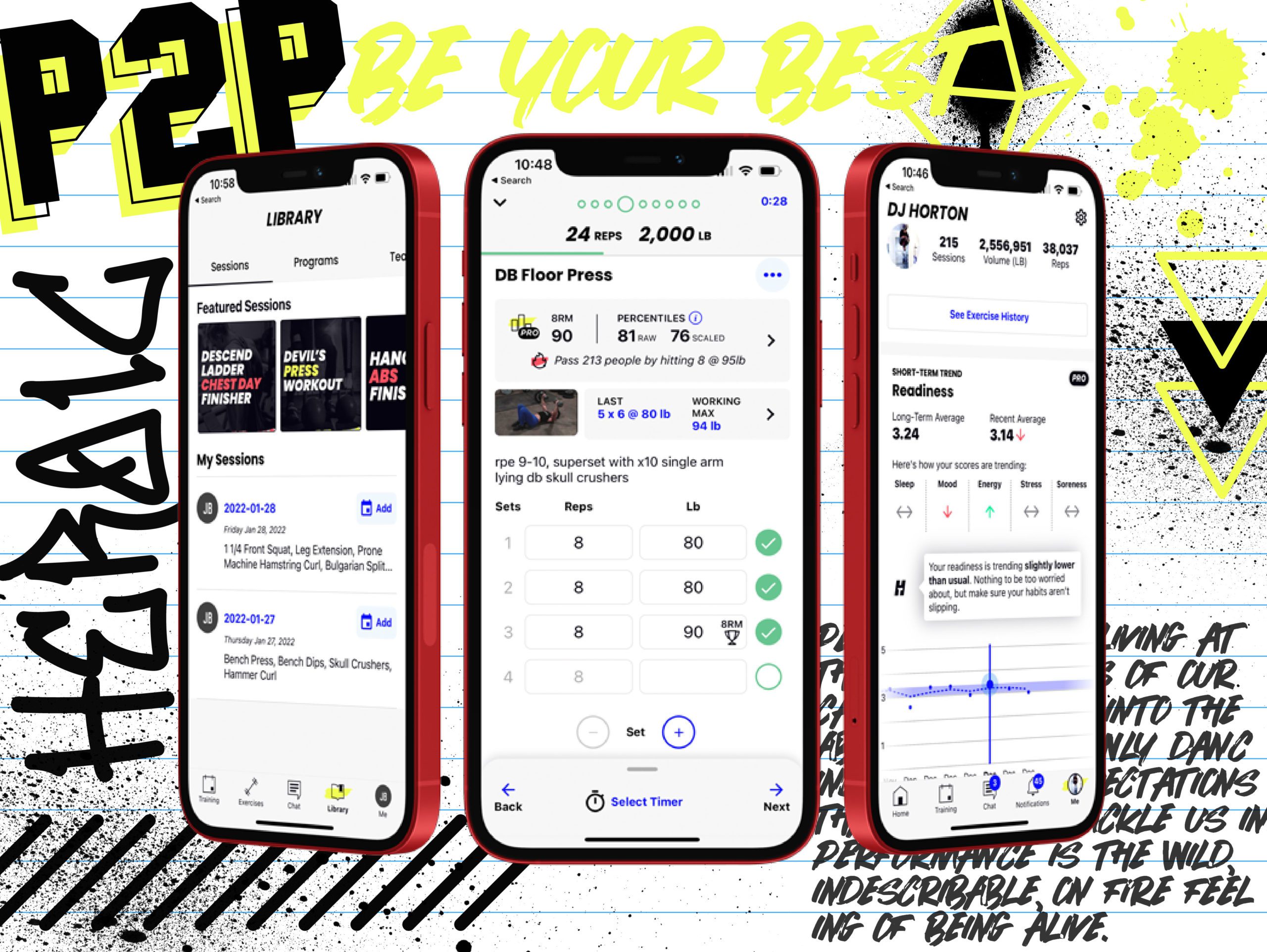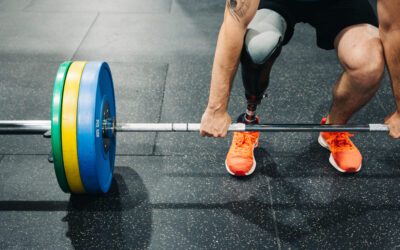Using Bodybuilding Methodology for Injury Rehab

As most athletes know, injuries come with the job description. Working with a physical therapist can make all the difference in the world. But did you know some bodybuilding training concepts make for excellent prehab/rehab principles?
Fred is a strength and conditioning coach, an army reserve medic, a nurse and a masters student working out of one of Edinburgh’s leading training facilities. He’s been fixing people for over a decade and works with athletes across the spectrum, from limping and injured to national and international champions. Read on to learn more about his hypertrophy-based approach to injury rehab.
Fred Ormerod


Injuries Are The Worst
Every gym enthusiast knows how frustrating it is to train around an injury. Just when your lifts are getting bigger and pumps are getting sweeter and sweatier, a heartbreaking ping in one pec crushes your dreams of flirting and flexing on a Friday night.
Thus begins the recovery process. Often as long and exhausting as the mental preparation for split squats, recovering from injury has claimed the careers of many aspiring athletes.
As a healthcare professional, I always encourage anyone to seek help from a pro in this scenario.
Now, on the face of it gym bros and PTs might seem like two diametrically opposed groups. But they’re actually two sides of a similar coin in their practiced principles. This main principle is in inducing hypertrophy training to improve muscle integrity and girth.
Any gym rat will tell you that working in a rep range of 8-15 (ish) is the best way to induce a hypertrophy stimulus — this is often echoed by physical therapists. But why?
Why Do PTs Prescribe Hypertrophy Training?
There are a number of good reasons why professional physios would prescribe rehabilitation exercises in these rep ranges:
1. To increase muscle size in a given range of motion
Hypertrophy training will eventually make muscles bigger (win!). Since many injuries cause atrophy in muscle tissues, reversing this withering of injured muscles helps with recovery.
We’ve probably all heard muscular imbalances that cause chronic issues such as neck or lower back pain are improved by readdressing those inequalities. There is certainly some truth to this as building a more stable, well-rounded athletic profile is proven to help reduce injury risk and improve existing injuries.
Simply helping tight muscles grow into the space they’re in has made a huge difference for so many injury cases in my experience (see anyone with tight quads and anterior pelvic tilt but terrific glutes).
2. To work with lower weights
Working in ‘hypertrophy rep ranges’ usually means reducing the weight in an exercise. Having worked with many strength athletes, it’s always amusing to see their face when told to work for more than 3 reps at 60% of their 1 rep max.
For many, lowering the intensity of a session by reducing load might help with the confidence of performing the required rehabilitative ranges of motion. The act of which, with some consistency, will lead to improvements in performance and muscle integrity.
Working with lower weights is sometimes undervalued in strength specific sports (which might be how an athlete gets injured in the first place), so building confidence in these rep ranges with manageable weights is key.
3. To maintain total training volume
Many studies show that so long as training load is maintained and progressively increased, an athlete will get stronger, faster, taller, handsomer, richer etc. The benefit of increasing sets and reps is that a coach or athlete can maintain or even increase total workload even when working at lighter loads and managing injury.
For instance: an athlete ordinarily bench presses 100kg for 3 working sets of 3 reps, but much to their dismay they ‘tweak or tear a tit.’ Should the injury not limit range of motion (like a grade 1 tear/strain), then they might still be able to keep training and they should.
By reducing the weight to <60% of their 1 rep max and increasing the reps to around 10, they might meet the required load for hypertrophy without risking further injury under a load their injured pec can’t handle.
In this case, (100kg x 3reps) x 3 sets = 900kg total volume.
Equally, (45kg x 10reps) x 2 sets = 900kg total volume.
Working at lighter weight can prevent problems with atrophy and even improve long-term outcomes for the injured muscle/tendon.
You Work too Hard to Not See Progress
Find Your Perfect Training Plan
Options for Every Goal
Training plans from real coaches covering any goal, fitness level, and number of sessions per week.
The Best Coaches
Get coached by the best. Olympians, ex-NFL stars, Titan Games Winners, Sport Scientists and more.
Starting at $1/ day
With many options including a free 7 day trial, you can try out programming before you commit.
Important Injury Considerations
Whether or not you’re capable of working in some hypertrophy around your injury depends entirely on the extent of your injury. These are the main issues I see all the time in athletes that come to me with chronic and acute (ish) injuries.
Impaired Range of Motion
The more obvious issue comes with injuries where range of motion (ROM) is heavily impaired. In these cases, working through pain free ranges of motion is a good idea. However, where this isn’t possible or there is simply no ROM at all, there’s a good chance something is fully torn. In this case surgery is in the offing, after which the gym can come calling again.
Chronic Under-Loading
Another rehab issue is under-loading the injured muscle — not providing a stimulus for growth. Recently I was involved in a conversation about an athlete with long-term Achilles pain. When performing calf raises to fix the problem they were only loading up with a 10kg plate. Given that they were well-trained, this represented barely 1/10th of what they could have been lifting, so there was little to no chance of seeing improvements.
They might as well have been carrying around a bigger handbag for the same effect. Once loaded up to a proper working load (100kg+ as it turned out) they saw big improvements in pain and performance. Happy days!
It’s worth noting at this point that one should always start conservatively and sensibly. If you’re new to lifting, 100kg might be an enormous load. If you’re a behemoth powerlifter, the 100kg might even be too little. Relative strength plays a key role in this approach.

Level Up Your Training
With TrainHeroic’s immersive training app
TrainHeroic does everything you wish your old gym notebook could do.
Take the guesswork out of training with built-in exercise instruction and basic training programs. Compete against yourself and others. Track your performance and readiness. Smash your goals.

Best Ways to Rehab Injuries
Now to get down to the crux of the matter. Here is a list of things to consider when adopting a hypertrophy-based training plan to recover from an injury.
1. Seek medical advice.
This is largely in here so I don’t get some muppet blaming me over social media because they went all gym bro “f*cking send it” and injured themselves more. However, anyone sensibly approaching a plan like this should get some assistance from someone in the know, be it a physio or knowledgeable coach. Not just in order to get a plan (feel free to check out my neck strengthening rehab plan), but having a friend at the gym for assistance can also be a massive help.
2. Actually do your prehab.
The best form of rehabilitation is pre-habilitation (otherwise known as strength training). Simply put, being strong through a given ROM will help prevent getting an injury in the first place. Work with your PT for help on common prehab movements like CARS, plyometrics, blood flow restriction, tissue manipulation, etc. Then actually show up to the gym early and DO your prehab before you train to prime your body for the work.
3. Use progressive, conservative overload.
When you start rehabilitating your injury, start slow and aim to gradually increase intensity and/or load as you go. Remember, if it’s a new exercise starting at a manageable weight should still glean improvements. “Noob gains” apply even to the strongest gym bro when they’re training a weaker or overlooked muscle group… like legs for example. The key word here is conservative.
4. Aim for pain-free ROM.
To quote comedian Tommy Cooper: “Doctor, it hurts when I do this… Well, then don’t do that.” There’s acceptable pain and bad pain in this scenario. Post workout DOMS (delayed onset muscle soreness) isn’t a bad thing. But if something hurts while training, that’s probably a sign you’re negatively affecting the injury. Be aware of general tightness versus shooting/sharp pain. The goal is to be able to progress through a sticky range of motion with no pain.
5. Use agonist & antagonist training.
As with training in general it’s always worth considering what stimulus the working (agonist) and opposite (antagonist) muscles are doing in a given movement. For example, in a bicep curl the biceps contract and the triceps elongate. If you’re training through a bicep injury, don’t neglect your triceps since they support the action of the biceps.
It’s also worth considering that if you’ve been walking around with an injury, there’s a good chance you’re “guarding” it — protecting it consciously or subconsciously. This can cause all sorts of problems long-term. Years ago I tore a tricep and the greatest issue I faced in my rehabilitative process was sorting out the associated neck and shoulder pain after walking round like a wounded puppy for the two weeks after. To prevent this, think about what muscle groups might be affected by not moving as a result of your injury and…. move them. (Smartly.)
6. Focus on eccentric loading & tempo.
This can be seen as a more advanced training technique for some, but I always encourage its use in rehab. Basically speaking, “do the down bit slow” (unless it’s a cable lat pulldown in which case it’s the “up bit”). Also known as negative or tempo training, eccentric-focused loading places greater stimulus on muscles that are stretching under tension. This means you can lift, avoiding the concentric contraction of an injured muscle, while maintaining a stimulus for growth and strength.
When performed regularly, eccentric training is also associated with improved ROM and decreased DOMS. But beware, if you’re training eccentrics for the first time, you will experience DOMS like never before, hence its usefulness for bodybuilders.
At the end of the day, recovering from an injury is never going to be the most pleasant part of your training process. It’s always worth getting help from gym buddies and professionals alike. Remember, if you train smart and work on gradually coming back from an injury, it’s an important part of your development as an athlete.
Consider using bodybuilding hypertrophy principles around lightly symptomatic injuries to test the waters. Your rehab/prehab process can only stand to benefit from stronger tissues and symmetrical muscle growth!
Want Training Tips, Exercise Guides & Knowledge Bombs Sent to Your Inbox?
Sign up for the FitNerd newsletter from TrainHeroic
Related articles
How To Zercher Squat: One Exercise To Rule Them All
I have a secret weapon exercise that will get us really close; it has a lot of bang for its buck. It builds massive quads, big glutes, a wide back, and some awesome biceps. Exactly what every athlete needs.
What Does Paralympic Strength Training Look Like?
Paralympians undergo rigorous training when preparing for the Paralympic Games. While the Paralympics only last about two weeks, getting ready takes place all year, as these athletes are among the most dedicated in the world. Here’s how people with disabilities...
Your Guide to Passive Recovery Strategies
What is Passive Recovery? I don’t think that there exists a complete guide for athletes that tackles the underrated topic of “Recovery-Regeneration” strategies. I plan to disclose a majority of the scientific and practical information that I know of on this topic and...

Join the community
Sign up for the latest training news and updates from TrainHeroic

About TrainHeroic
Support
Made with love, sweat, protein isolate and hard work in Denver, CO
© 2022 TrainHeroic, Inc. All rights reserved.






